CLIL Art lesson plan. Impressionism. Claude Monet
Impressionism. Claude Monet
Section/Subject: ESP bank - CLIL, Art and History of Art
Topic: Impressionism. Claude Monet
Level: Low intermediate +
Target age: Teenagers / adults
Time (approx): 45 min
Objectives: to introduce Impressionism as an Art movement; to introduce Claude Monet as a representative of an Impressionism style; to develop listening, reading, and speaking skills, to develop creativity.
Used materials:
- Impressionism and Monet. (By Adrian Tennant, onestopenglish.com) https://www.onestopenglish.com/lessons/impressionism-and-monet/155202.article
- Art and drawing. Perspective. (By Chris Dawson and Daniela Morini) https://www.onestopenglish.com/lessons/art-and-drawing-integrated-skills-clil-lesson/551167.article
Note: These activities are suitable for students who don’t know much at all (possible nothing at all) about Impressionism.
Preparation:
1 - a selection of paintings by Monet (addition 5);
2 - the sets of questions for a group discussion (addition 1, Worksheet 1);
3 - the names of the paintings, to be cut separately ( addition 2, Worksheet 2);
4 - listening activity (addition 3, Worksheet 3);
5 - listening activity (audio, downloadable from the used materials resources);
6 - reading / speaking activity (addition 4, Worksheet Sa, Sb);
7 - paper and pencils.
- Warm up
Write Art on the board and ask your students what they know about art and whether they can name any particular types or ‘schools’ of art e.g. Impressionism, Cubism, Modernism etc.
If any students come up with Impressionism, ask them what they can tell you about it. (Impressionism is a style of painting, which was used especially in France in the 19th century. The artists tried to represent the effects of light on an object and the impression rather than the object itself).
- Paintings discussion
- Put the students in groups and show them a selection of paintings by Monet [1]. Alternatively, have students research Monet’s paintings on the Internet (see the list of useful websites at the end). Share the groups the sets of questions [2] and ask them to discuss. Finally, have a class discussion asking students to report back on their group discussion.
- Do you like any of the pictures?
- Which ones do you like? Why?
- Which ones don’t you like? Why?
- Have a general class discussion:
- Why does Impressionism style stand out of the crowd? (It shows the artists’ impression of an object)
- Whose paintings do you think they are? (Claude Monet. C.M. was the leader of the French Impressionism movement, literary giving the movement its name. Monet was known for his unique painting style and the ability to capture the same subjects in different light, colour or seasons. He was a master of landscapes and often painted scenes of nature in the outdoors as he witnessed them to bring out a general “impression”).
- What are some typical features of Impressionist style?
(- quick, loose brushstrokes – this is because the artists usually worked outside and didn’t have enough time to complete their images;
- bright paintings – colours and brightness differed by artists, but in general you’ll see a lot of brightness;
- “En plain air” (Fr. “outdoor paintings”) – paintings prior to Impressionism were usually completed outside)
Throughout the discussion pin up or write down some most meaningful ideas on the board to make them more memorable for the students.
- Share the stripes of paper [3] with the names of the paintings and ask the students to match the paintings with their names. Students work in groups. The groups swap their places to check the matchings.
- Listening
- Share the worksheets [4] with the students and tell them that they are going to listen to an audio about Claude Monet and their task is to mark the sentences as “true” or “false”. Allow them a couple of minutes and play the audio twice [5]. Students will work individually. Students check their answers in pairs and then have a class check.
Photography was perfected before 1850, and Kodak started to sell its first camera to the public in 1888. Artists started to see the world differently, and did not want so much to represent reality exactly as it is in photographs. They started to study different effects of light and emotion, and to paint the world as it appears.
In 1873, Claude Monet painted an industrial harbour at sunrise. It was the beginning of the Impressionist movement. People didn’t like these new paintings: they didn’t show historical subjects, and they didn’t teach people anything. A lot of people said that they were not real art.
Monet painted the same subjects again and again, at different times of day: a cathedral, a railway station, his garden, the reflections in a pond. Now people think that these are some of the most beautiful paintings ever made.
Listen about Claude Monet. Write True or False.
1 After 1850, artists started to study different effects of light and emotion.
2 They wanted to paint reality as it is, not as it appears.
3 In 1873, Claude Monet painted an industrial harbour at sunrise.
4 Everyone liked the new Impressionist paintings straight away.
5 Monet painted the same things many times.
Answers: 1 true; 2 false – they wanted to paint the world as it appears; 3 true; 4 false – a lot of people said they were not real art; 5 true.
- Ask the students to answer the question:
- What did Monet paint in 1873? (Harbour at sunrise)
- Why is the painting so special? (It was the beginning of the Impressionism movement)
- Did people like the Impressionist style pictures? Why? (No. They didn’t show historical subjects, and they didn’t teach people anything).
- What do people think now? (Now people think that these are some of the most beautiful paintings ever made).
- What does the picture show? (A beautiful contrast between orange and blue-violet colours against a misty morning harbour scene)
Background information: Monet completed “Impressionism. Sunrise” in just a few hours while overlooking the port from his hotel room.
- Reading
- Divide the class into two groups: A and B. Give each student A Worksheet Sa and each student B Worksheet Sb [6]. Tell them to read through their worksheet and then write seven questions to try and find the missing information. Monitor and check their questions. Now pair up each student from group A with one from group B. Tell them to take it in turns to ask and answer the questions using their worksheets and complete the missing information (encourage them not to show the information).
- Check and discuss.
Key
Claude Monet was one of the most important Impressionist artists. He was born on
(1) November 14, 1840 in (2) Paris, but at the age of (3) five moved to (4) Le Havre.
His father was a (5) grocer and wanted Claude to take over the family business. However, Claude wanted to be an artist. When he was (6) 16 his mother died and he went to live with his (7) aunt in Paris. He often visited (8) the Louvre, but instead of copying the paintings there he would sit at the window and paint what he saw.
At the age of (9) 21 Monet (10) joined the French army and went to Algeria. After two years he returned to Paris and began painting. Then, in 1870 he moved to (11) England where he studied the paintings of two English greats – Turner and Constable. Both of these artists gave Monet a lot of inspiration. In (12) 1872 he returned to France and painted Impression, Sunrise. It is from this painting that the Impressionist movement got its name. Monet died, at the age of (13) 86, in (14) 1926.
- Wrap up. Collaborative project
Work in pairs. Decide which of you is going to speak and which of you is going to draw a picture. The student who is going to speak needs a copy of the picture: the other student must not look at this picture, but needs a blank sheet of paper and a pencil [7]
Sit back to back. The speaker chooses one of the paintings to describe in English. The other student is going to try to draw a copy of the painting from the description.
Start by giving an idea of the general layout of the painting. Use these words:
In the foreground
In the background
In the centre
In the top left-hand corner
In the bottom right-hand corner
To the left / right
Above / below
In perspective
Large / small
Wide / narrow
Now describe the main figures in the painting in detail. Describe the whole figure, then describe its parts so that your partner can draw them.
Remember to describe which way round the figures are:
Facing the viewer
Full face
Side-on
In profile
You can see two sides
Three-quarter face
From above/below
From behind
When you have finished the drawing, compare it with the original and discuss what was difficult. Find any language you needed but didn’t know.
Then change roles (the speaker becomes the drawer and vice versa), choose another picture and try again. It should be easier, because this time the drawer will already have seen the picture!
Addition 1
Worksheet 1
Do you like any of the pictures?
Which ones do you like? Why?
Which ones don’t you like? Why?
Addition 2
Worksheet 2
Water Lilies
Impression, Sunrise
Haystacks
Woman With A Parasol
Houses Of Parliament
The Water Lily Pond
Addition 3
Worksheet 3
Listen about Claude Monet. Write True or False.
1 After 1850, artists started to study different effects of light and emotion.
2 They wanted to paint reality as it is, not as it appears.
3 In 1873, Claude Monet painted an industrial harbour at sunrise.
4 Everyone liked the new Impressionist paintings straight away.
5 Monet painted the same things many times.
Addition 4
Worksheet Sa
Student A
Claude Monet was one of the most important Impressionist artists. He was born on
(1) ____________ in Paris, but at the age of five moved to (4) ___________. His father was a (5) ___________ and wanted Claude to take over the family business. However, Claude wanted to be an artist. When he was (6) ____ his mother died and he went to live with his aunt in Paris. He often visited (8) ___________, but instead of copying the paintings there he would sit at the window and paint what he saw.
At the age of 21 Monet (10) ________________ and went to Algeria. After two years he returned to Paris and began painting. Then, in 1870 he moved to England where he studied the paintings of two English greats – Turner and Constable. Both of these artists gave Monet a lot of inspiration. In 1872 he returned to France and painted Impression, Sunrise. It is from this painting that the Impressionist movement got its name. Monet died, at the age of (13) _____, in 1926.
Questions
(1) When ________________________________________?
(4) Where ________________________________________?
(5) What ________________________________________?
(6) How old ________________________________________?
(8) Where ________________________________________?
(10) What ________________________________________?
(13) How old ________________________________________?
Worksheet Sb
Student B
Claude Monet was one of the most important Impressionist artists. He was born on November 14, 1840 in (2) ___________, but at the age of (3) ___________ moved to Le Havre. His father was a grocer and wanted Claude to take over the family business. However,
Claude wanted to be an artist. When he was 16 his mother died and he went to live with his (7) ___________ in Paris. He often visited the Louvre, but instead of copying the paintings there he would sit at the window and paint what he saw.
At the age of (9) _____ Monet joined the French army and went to Algeria. After two years he returned to Paris and began painting. Then, in 1870 he moved to (11) ____________ where he studied the paintings of two English greats – Turner and Constable. Both of these artists gave Monet a lot of inspiration. In (12) ___________ he returned to France and painted Impression, Sunrise. It is from this painting that the Impressionist movement got its name. Monet died, at the age of 86, in (14) ____________.
Questions
(2) Where ____________________________________________?
(3) How old ____________________________________________?
(7) Who ____________________________________________?
(9) How old ____________________________________________?
(11) Where ____________________________________________?
(12) When ____________________________________________?
(14) When ____________________________________________?
Addition 5
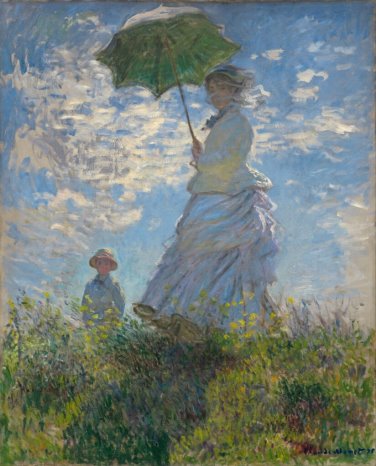
Woman With A Parasol
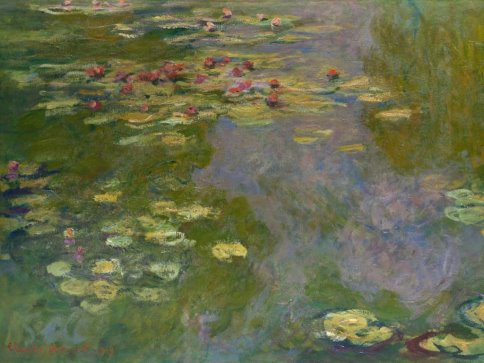
Water Lilies
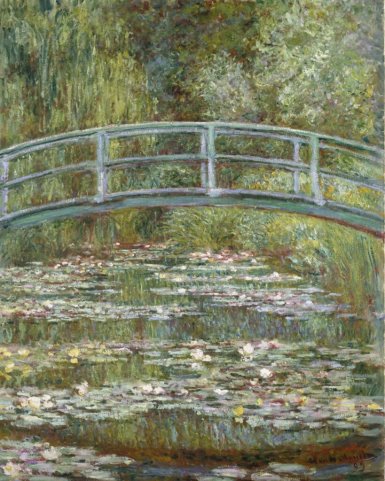
The Water Lily Pond
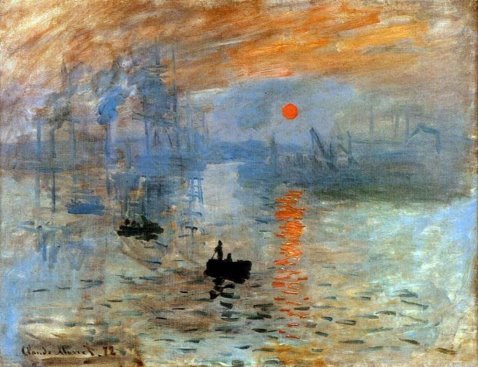
Impression, Sunrise
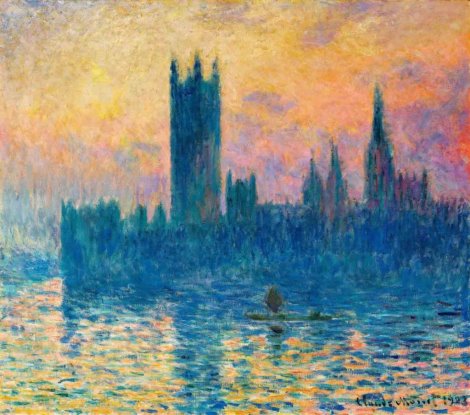
Houses Of Parliament
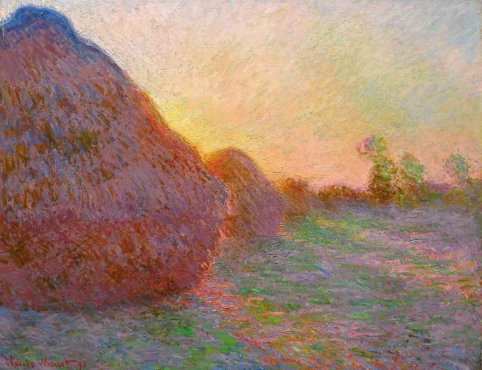
Haystacks


про публікацію авторської розробки
Додати розробку
